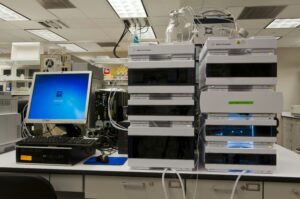
Humanity’s ambitious plans to colonize Mars have received a significant boost following a groundbreaking scientific discovery. Both NASA and SpaceX, led by Elon Musk, have outlined their intentions to send humans to the Red Planet in the coming years. SpaceX’s vision includes establishing habitable cities on Mars, a goal that has been in collaboration with NASA for several years. This week, SpaceX’s Starship rockets completed their 11th test launch, marking a critical step forward in these efforts.
However, the dream of making Mars livable for humans faces numerous challenges, particularly in terms of food production. Recent advancements in biotechnology have enabled astronauts to create yeast using only their breath. This innovation, known as ‘space yeast,’ is poised to play a crucial role in sustaining human life on Mars, thanks to new findings regarding yeast’s survivability in Martian conditions.
Breakthrough in Yeast Survivability
The discovery of yeast’s potential viability on Mars was made during the 2023 Deep Space Food Challenge. The process involves combining water, a yeast starter, and air in a machine that produces a ‘protein shake textured-yeast,’ which can be transformed into pasta or tortillas. Yet, the harsh Martian environment poses significant obstacles, including radiation, shock waves, and extreme temperatures, all of which threaten food sustainability.
Fortunately, a recent peer-reviewed study published in PNAS Nexus has revealed that yeast can withstand these harsh conditions. The study subjected Saccharomyces cerevisiae, commonly known as Baker’s yeast, to simulated Martian conditions, including intense shock waves and the presence of perchlorates, a toxic chemical found in Martian soil.
“The yeast was able to survive 5.6 Mach intensity shock waves and 100 mM sodium salt of perchlorate, which replicates the conditions of Mars, as well as a combined stress of both,” the study noted.
Understanding RNP Condensates
When exposed to stress, yeast, like many organisms, forms ribonucleoprotein (RNP) condensates, structures composed of RNA and proteins. The study found that under the influence of shockwaves and perchlorate, the yeast formed RNP condensates. The authors highlighted the significance of this discovery:
“This study, a first of its kind, highlights the importance of RNP condensates in understanding the impact of Martian conditions on life in general. This study paves the way for using RNP condensates as a biomarker for assessing the health of life forms during space explorations.”
The implications of this research are profound, suggesting that life might be able to survive in extraterrestrial environments. This finding is crucial for the future of human colonization on Mars and potentially other celestial bodies.
Looking Ahead: The Path to Mars
While the plans by SpaceX and NASA to send humans to Mars by 2040 are ambitious, this study brings humanity closer to realizing this vision. The ability to produce food sustainably on Mars is a critical component of long-term colonization efforts. As scientists continue to explore and overcome the challenges of living on Mars, the dream of establishing a human presence on the Red Planet becomes increasingly feasible.
The announcement comes at a time when space exploration is experiencing a renaissance, with private companies and government agencies alike pushing the boundaries of what is possible. As humanity looks to the stars, the recent breakthroughs in biotechnology and space exploration provide a hopeful glimpse into a future where Mars is not just a distant dream but a tangible reality.
As research continues and technology advances, the possibility of humans living on Mars becomes more than just science fiction. The next steps involve further testing and development to ensure the feasibility of sustaining life on Mars, paving the way for a new era of human exploration and settlement in space.





